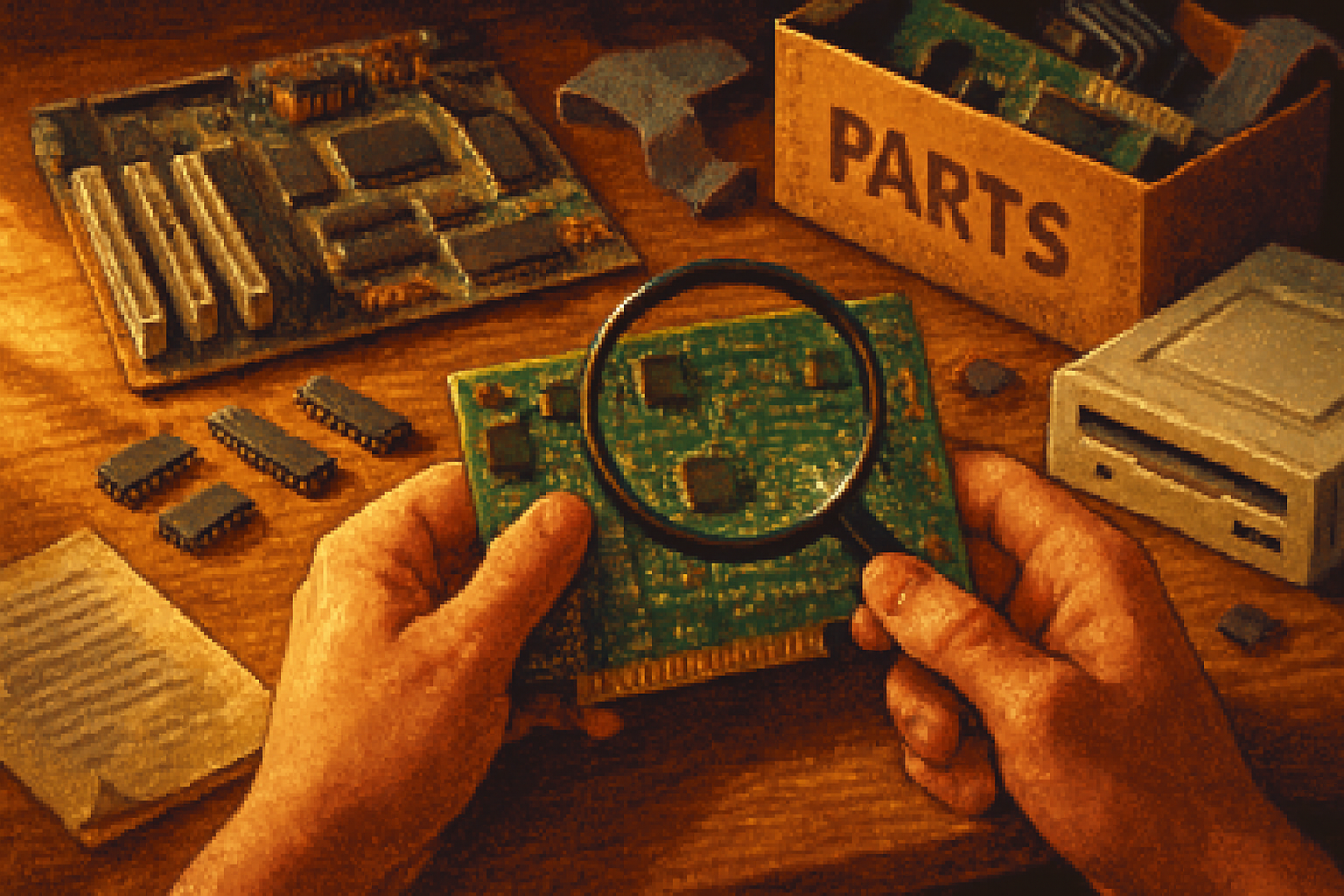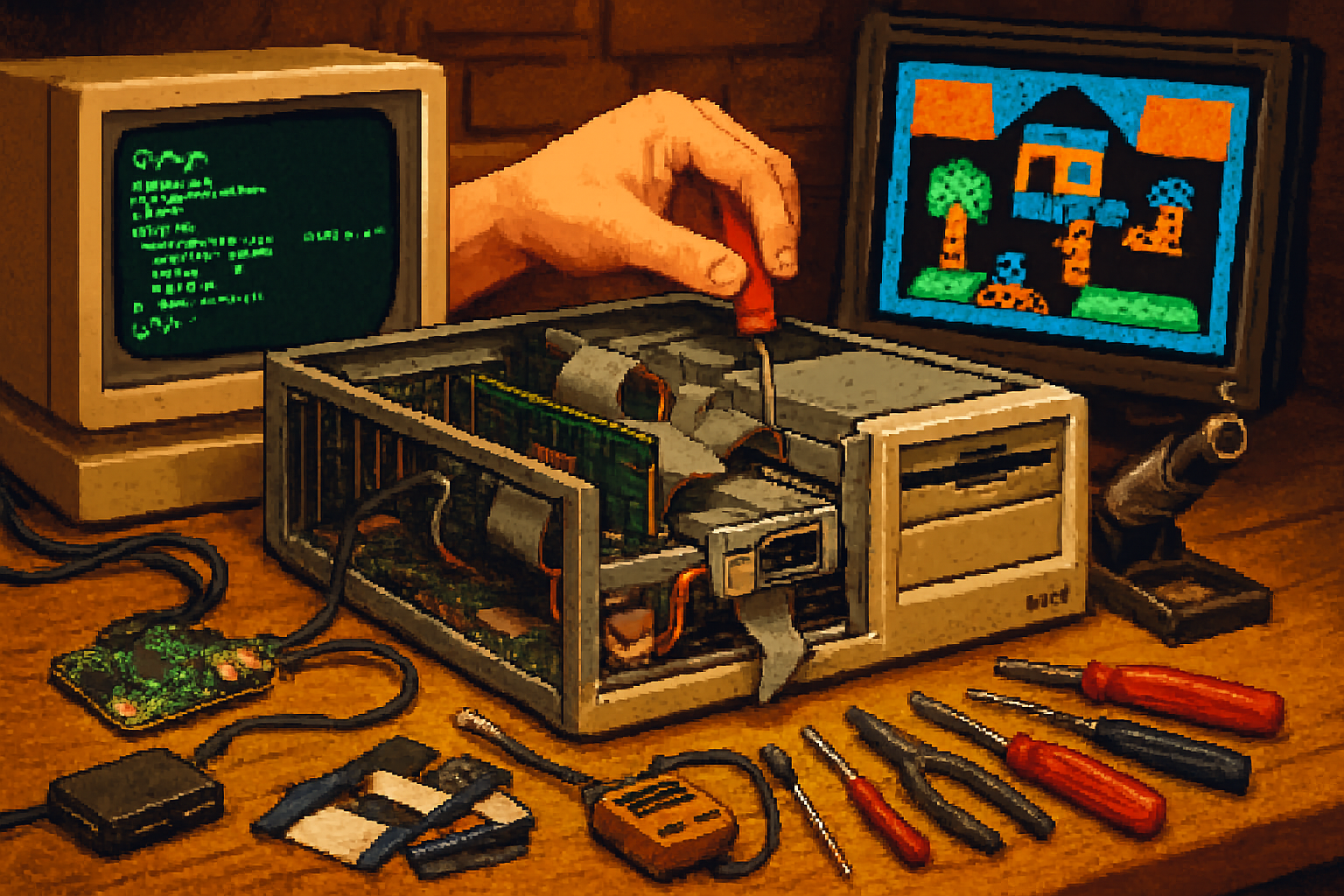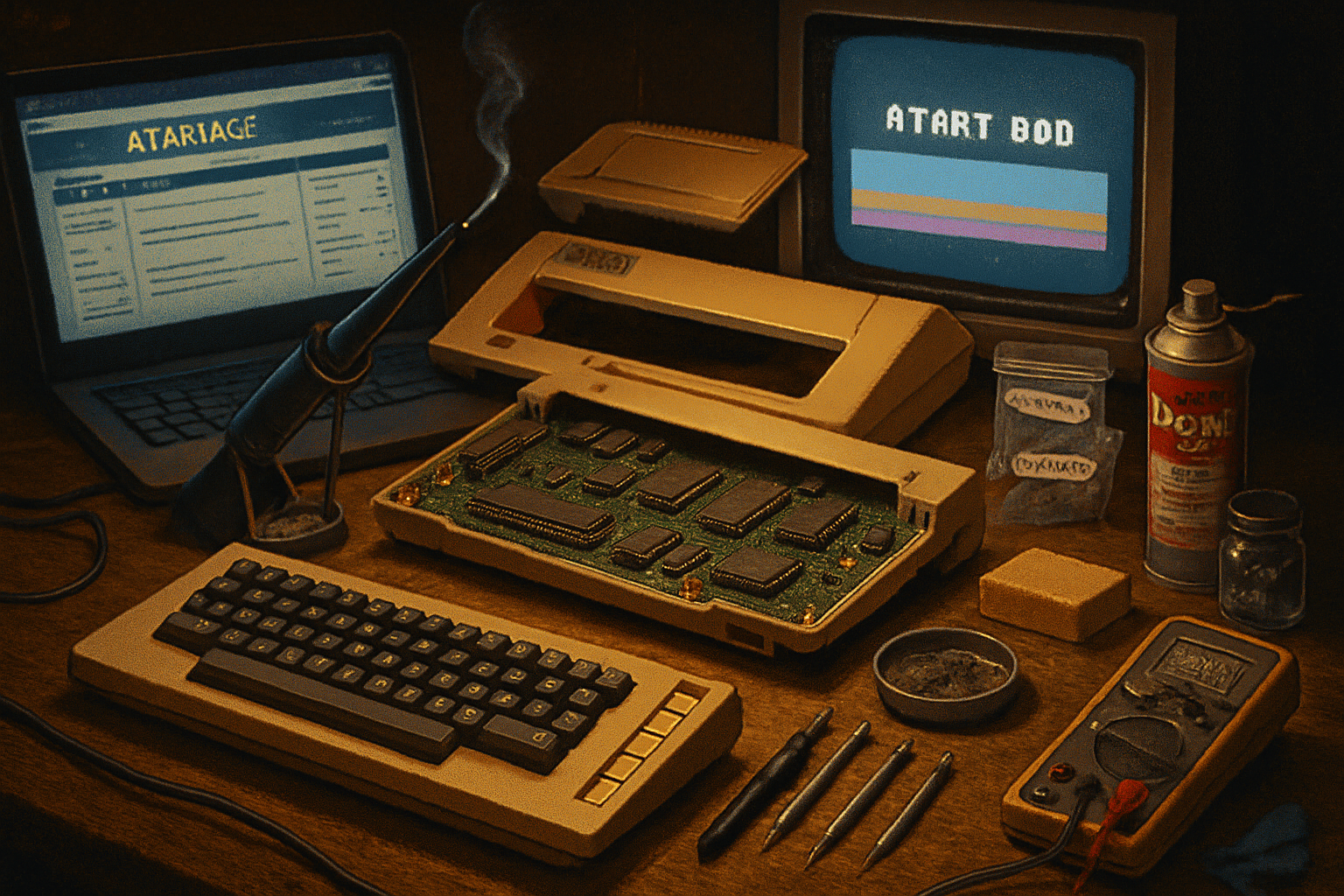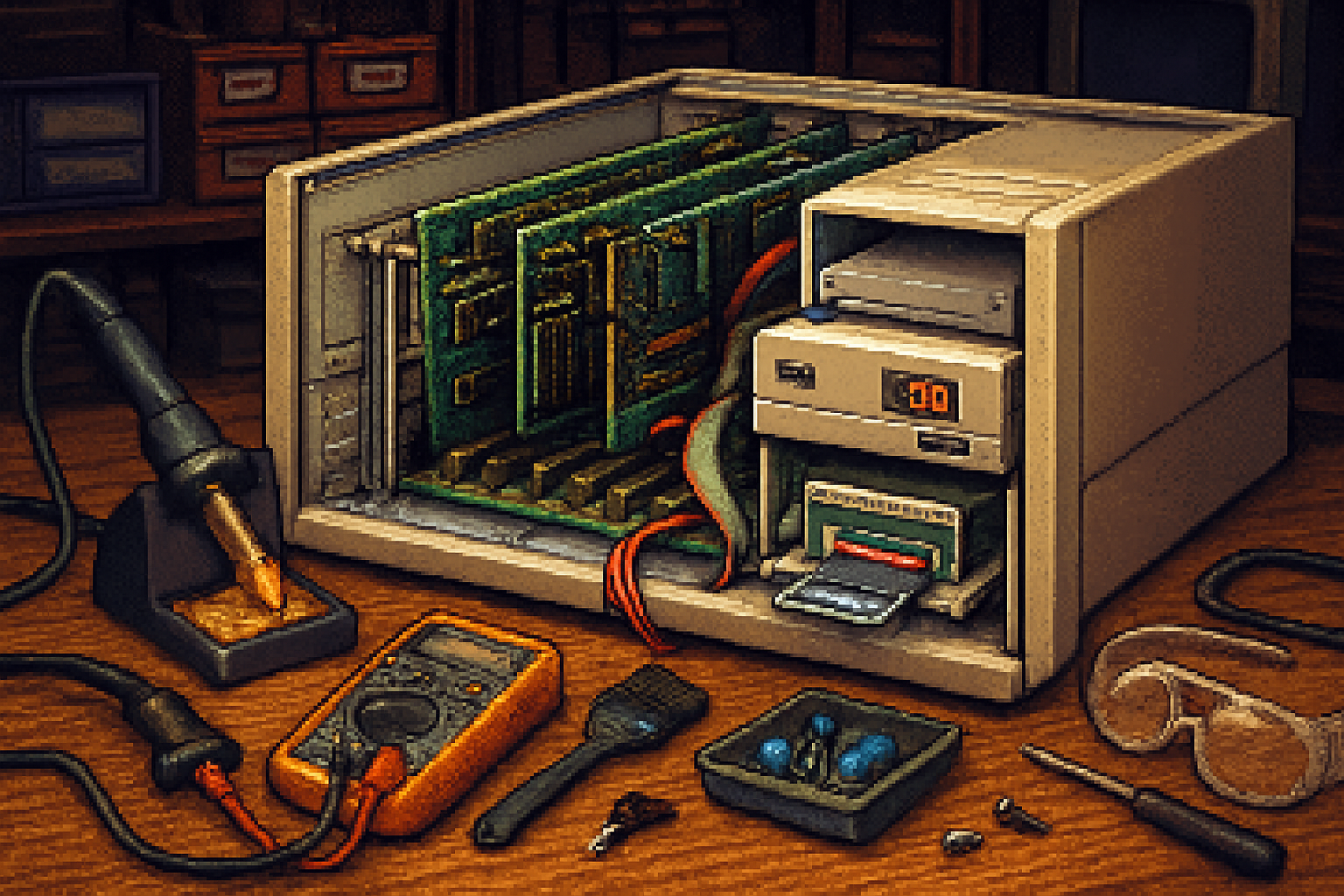· 7 min read
From Dust to Digital: Unique Ways to Source Vintage Parts for Your Retro PC
Discover unconventional, reliable methods to find rare vintage PC parts - from thrift stores and flea markets to university surplus, hamfests, and niche online communities - plus practical tips for identification, testing, negotiation, and safe shipping.

Why sourcing vintage PC parts is its own treasure hunt
Building or restoring a retro PC is more than a technical project - it’s archaeology. The thrill of turning a dusty board into a working piece of history is a big part of the hobby. But the hunt for rare components (motherboards, ISA/PCI cards, DIP ROMs, vintage CPUs, power supplies, floppy drives, CRT monitors) can be frustrating if you only look at the obvious places.
This guide dives into creative, effective methods for finding vintage PC parts and gives practical advice on identification, testing, negotiation, and shipping so your finds survive the journey from “dust” to “digital.” Wherever possible, I link to resources to help you take the next step.
Unconventional and high-yield sources
Below are places often overlooked by newcomers, with tips to maximize what you’ll find.
1) Thrift stores and charity shops
Why it works: Donations come from households and small offices that often throw out working or repairable gear. Old PCs, keyboards, and peripherals commonly sit on shelves for months.
How to play it:
- Visit regularly (daily or weekly) - inventory turns over fast.
- Build rapport with staff; ask about electronics arrival days and whether you can be notified.
- Scan for brand names, model numbers, and ports (ISA, DB-25, PS/2, DIN). Bring a smartphone to look up part IDs.
Resources: Local chains and community-run shops; see Goodwill for general thrift store info: https://www.goodwill.org
2) Flea markets, swap meets, and boot sales
Why it works: Sellers often unload entire boxes of electronics at low prices and may not know what they have.
How to play it:
- Arrive early for best finds; late for bargains.
- Ask vendors to pull boxes - many hide treasures inside.
- Bring a multimeter and small toolkit for quick testing.
Flea-market finder resources and local event calendars help you plan visits.
3) Estate sales and garage sales
Why it works: When estates are cleared, older electronics are common, especially from collectors who passed items down.
How to play it:
- Use estate sale listing sites to target houses with electronics collections: https://www.estatesales.org
- Contact organizers and ask about electronics items in advance.
- Estate sales often allow negotiation toward the end of the day.
4) Repair shops, independent IT refurbishers, and pawn shops
Why it works: Repair shops inherit broken or obsolete gear; some keep parts bins for recycling.
How to play it:
- Offer to buy or trade for parts bins.
- Volunteer to help sort or test in exchange for first dibs on useful parts.
5) Industrial surplus, government and university surplus auctions
Why it works: Schools, labs, and government offices periodically retire old equipment - sometimes entire computer labs.
How to play it:
- Watch surplus auction sites like GovDeals: https://www.govdeals.com
- Subscribe to university surplus mailing lists or visit public surplus lots.
6) E-waste recycling centers and salvage yards
Why it works: Salvage operations collect tons of end-of-life electronics; not everything is shredded or recycled right away.
How to play it:
- Contact local e-waste centers and ask about salvage policies - some allow “pickup” times for hobbyists.
- Bring safety gear and be prepared to harvest components on-site (with permission).
EPA guidance on electronics recycling: https://www.epa.gov/recycle/electronics-donation-and-recycling
7) Hamfests, maker fairs, retro computing festivals, and meetups
Why it works: These events are magnets for hobbyists who buy, sell, and trade vintage parts and whole machines.
How to play it:
- Attend Vintage Computer Festival events and VCFED meetups: https://www.vcfed.org
- Bring cash and business cards; networking yields leads beyond the event.
8) Online marketplaces and niche sites
Why it works: eBay, Facebook Marketplace, Craigslist and specialized shops aggregate global listings but require savvy searching.
How to play it:
- Use saved searches and alerts (eBay saved searches, Google Alerts) for specific part numbers and models.
- Search for broader terms (“vintage PC parts,” “computer lot,” “broken computer”) and filter by location for pickup deals.
- Look at niche vintage sellers and parts brokers who specialize in retro hardware.
eBay help on saved searches and alerts: https://www.ebay.com/help Google Alerts: https://www.google.com/alerts Facebook Marketplace: https://www.facebook.com/marketplace
9) Online communities and social media groups
Why it works: Retro computing communities trade parts, post local finds, and offer advice on rarities.
Where to look:
- Reddit communities like r/retrobattlestations and r/vintagecomputing: https://www.reddit.com/r/retrobattlestations/
- Vintage Computer Federation forums: https://www.vcfed.org/forum/
- Dedicated Facebook groups and Discord servers focused on retro hardware.
Tip: Post “want to buy” (WTB) threads with details, photos of the part you need, and acceptable condition.
10) Auctions - online and live
Why it works: Estate houses and liquidation auctions can have complete machines and lots of components.
How to play it:
- Inspect lots carefully; bidding wars can kill bargains but sometimes a lot-level buy is ideal for harvesting.
- Factor in buyer’s premium and shipping when bidding remotely.
Identification, verification, and cross-referencing
Before you buy or harvest a component:
- Photograph any markings and search the model/part number. Tools like CPU-World are great for CPU ID: https://www.cpu-world.com
- Use pinout diagrams and connector photos to verify compatibility.
- Ask sellers for clear photos of the PCB silk-screen, chips, and revision numbers.
If a part is rare, ask for provenance (where it came from, how it was stored). Conservatively treat items from damp basements or garages as needing cleaning and testing.
Testing and restoration basics
Safety first:
- Work on a non-conductive surface, use anti-static precautions (wrist strap, bags), and unplug everything. Use eye protection when desoldering.
Initial tests:
- Visual inspection for corrosion, leaking capacitors, burned traces.
- Continuity checks with a multimeter for broken traces and shorted power rails.
- For drives and floppy mechanisms, a gentle mechanical cleaning and new belts (if available) often revive them.
Cleaning:
- Isopropyl alcohol (90%+) for light cleaning.
- DeoxIT for dirty connectors.
- Avoid distilled water soaking unless you know how to dry PCBs safely.
ROMs and BIOS chips:
- Verify part numbers and contents where possible. For compatibility, cross-reference BIOS region and version.
Negotiation, pricing and avoiding scams
Negotiation tips:
- For thrift/flea sellers - ask “If I buy all of these, what’s your best price?” Bundles move quicker.
- For online sellers - don’t be afraid to ask for additional photos or an inspection window.
Scam red flags:
- Too-good-to-be-true prices with high-pressure “buy now” messages.
- Sellers who refuse to show close-up images or reply inconsistently.
- Always use tracked payment methods and document conversations.
Packing and shipping vintage electronics
Best practices:
- I use anti-static bags, foam, and layered bubble wrap. For heavy metal parts, reinforce boxes.
- Add desiccant packs for moisture-prone items.
- Ship with tracking and insurance for high-value components.
Build a long-term harvesting strategy
- Set up saved searches and alerts on eBay, Craigslist, and Google Alerts for exact part numbers and broader terms.
- Join local retro computing clubs; members often trade or hold sales.
- Volunteer at repair cafes, maker spaces, or events - you’ll get the first look at donations and discards.
- Keep a catalog (spreadsheet) of sources, contacts, and part photos for quick reference.
Quick search-phrase cheat sheet
Search strings to copy/paste:
- “IBM 5150 motherboard” OR “PC 5150” OR “ISA expansion card lot”
- “vintage computer parts lot” OR “computer parts salvage” OR “vintage PC components”
- “broken computer for parts” OR “computer lot for repair”
- “floppy drive 3.5” OR “5.25” floppy drive” OR “head replacement floppy”
Add location modifiers (“near me” or a city/state) to find pickups and avoid shipping.
Useful resources and communities
- Vintage Computer Federation: https://www.vcfed.org
- Reddit r/retrobattlestations: https://www.reddit.com/r/retrobattlestations/
- CPU-World for CPU identification: https://www.cpu-world.com
- eBay help on saved searches and alerts: https://www.ebay.com/help
- GovDeals surplus auctions: https://www.govdeals.com
- EPA guidance on electronics recycling: https://www.epa.gov/recycle/electronics-donation-and-recycling
Final thought
Sourcing vintage PC parts is part detective work, part social networking, and part mechanical revival. By widening your search beyond the usual marketplaces - to thrift shops, estate sales, surplus auctions, community events, and local repair hubs - you not only increase your chances of finding rare components but also keep useful electronics out of the landfill.
Keep notes, build relationships with sellers and fellow hobbyists, and enjoy the hunt. The best discovery is the one that turns a forgotten board into a working piece of computing history.



